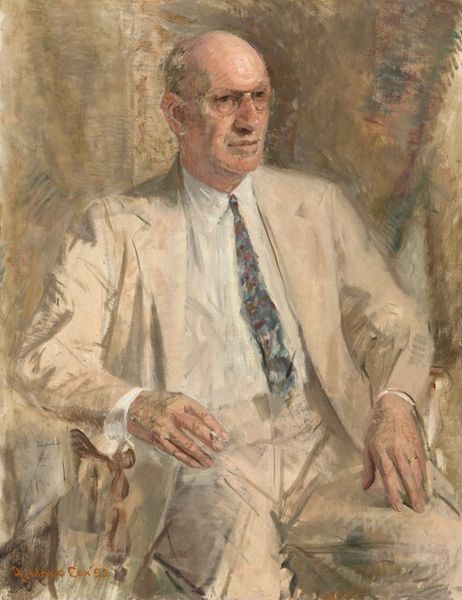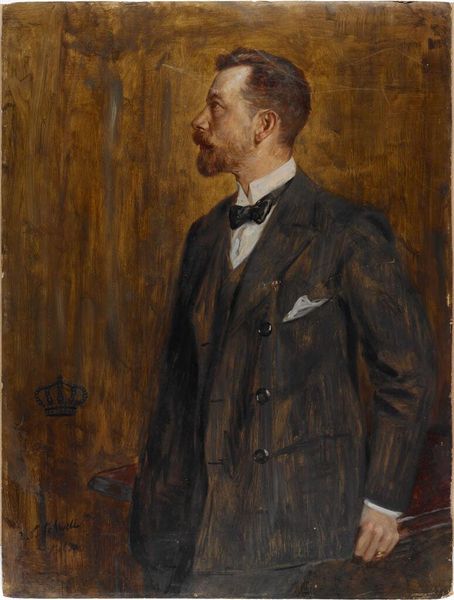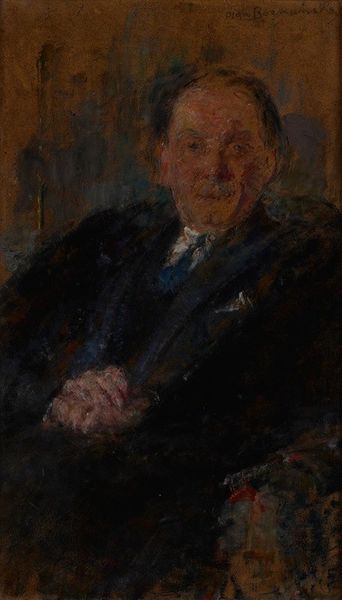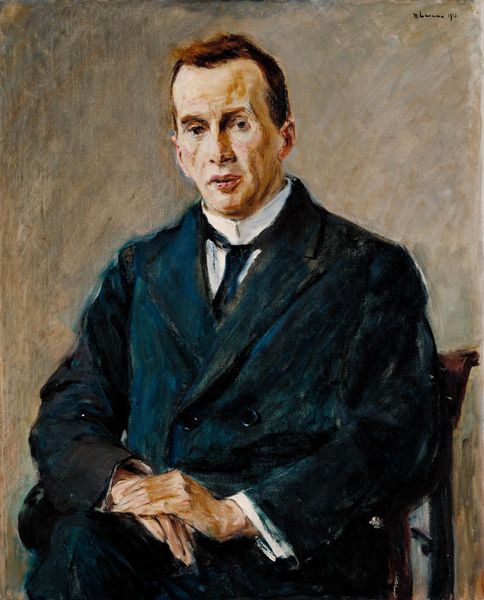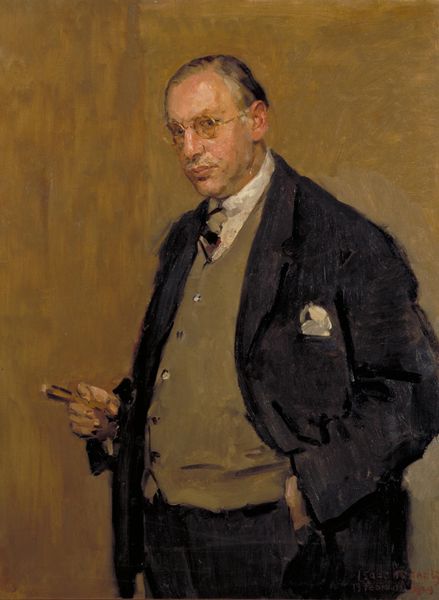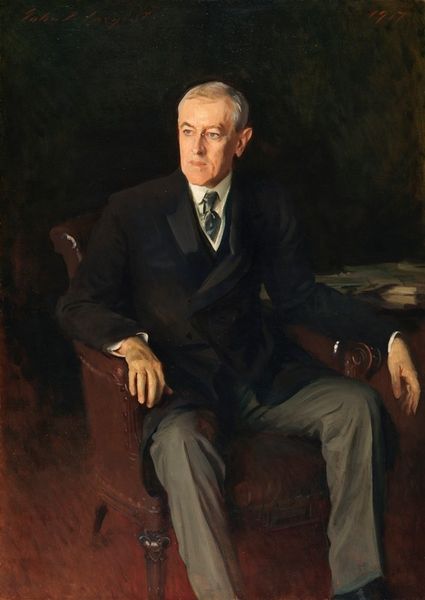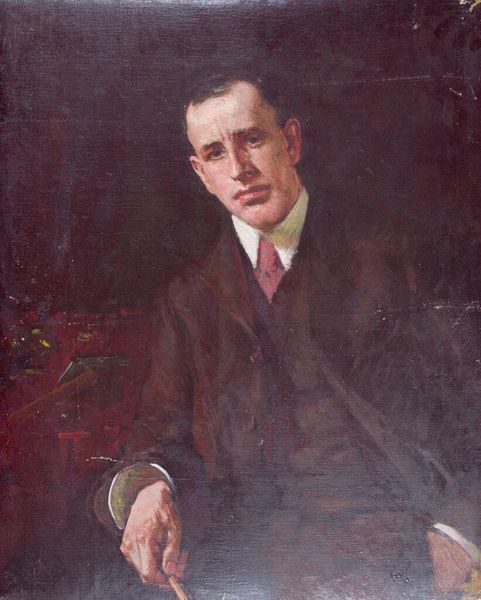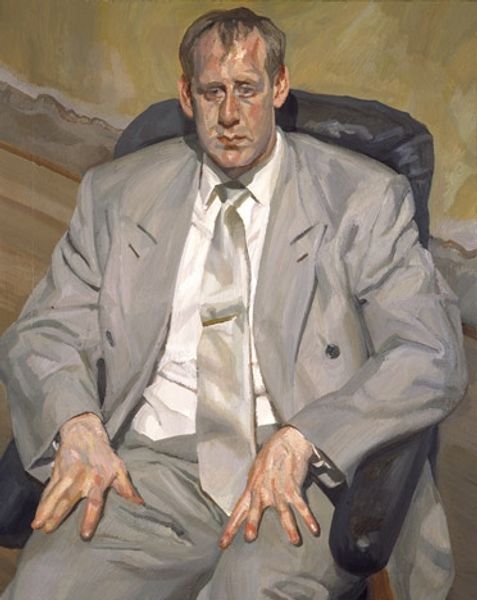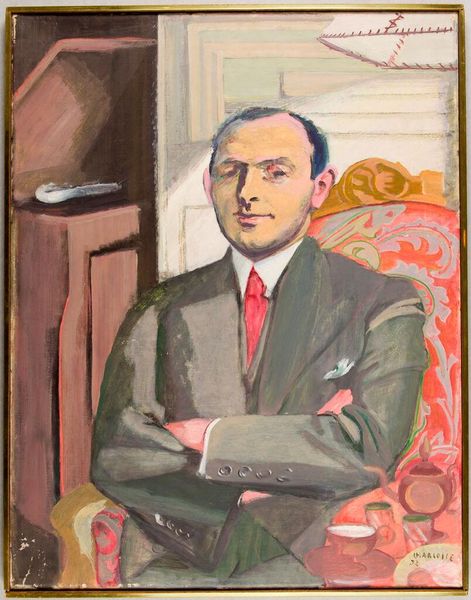
painting, oil-paint
#
portrait
#
painting
#
oil-paint
#
modernism
#
realism
Dimensions: overall: 124.7 x 102.3 cm (49 1/8 x 40 1/4 in.) framed: 157.2 x 134.6 x 10.7 cm (61 7/8 x 53 x 4 3/16 in.)
Copyright: National Gallery of Art: CC0 1.0
Curator: Augustus John painted this portrait of Joseph E. Widener in 1921 using oil paint. Looking at it now, what are your immediate thoughts? Editor: It strikes me as quite solid and formal. There's a palpable weight, not just of the sitter, but also in the handling of the materials. Look at how heavy the brushstrokes seem in the background. Curator: That perceived weight feels historically appropriate. Widener was, of course, deeply embedded in the world of art acquisition during a time when wealth and social standing dictated access to culture. How does this representation of wealth translate onto the canvas in terms of John’s application of the oil paints? Editor: Absolutely. There is almost a brutishness to the brushwork, particularly in the background, which contrasts sharply with the more refined details of Widener’s suit and face. I think there’s an interesting tension in using such coarse means to depict a symbol of high society and the wealthy patron. Curator: Do you see it as a critique then, this tension you describe? There’s an undeniable power dynamic at play when an artist paints a patron. How does John negotiate that? Editor: Perhaps not an outright critique, but certainly an acknowledgment of the materiality that enables this portrait's very existence. Oil paint, pigments, the canvas itself – all require labor, extraction, manufacturing. John is making those elements visible. It is worth thinking about where he places Joseph, he isn’t on a chair throne but something modest. The background may suggest wealth in subject, however it is simply raw oil strokes to make it. Curator: That reading adds depth to the piece, seeing the raw strokes not just as stylistic choices, but as markers of labor and production. Considering Widener’s societal position at that moment and even moving beyond into contemporary art’s role, this is worth observing. Editor: Exactly. It invites us to question what materials were readily available and what they symbolize within social-economic dynamics and hierarchies. What's particularly remarkable is that something we’ve been engaging and observing, for centuries is a mere illusion using labor. Curator: Food for thought! Thank you.
Comments
No comments
Be the first to comment and join the conversation on the ultimate creative platform.


